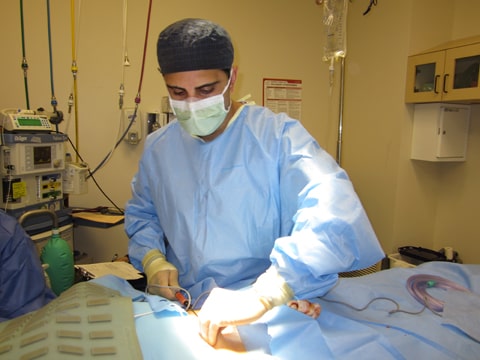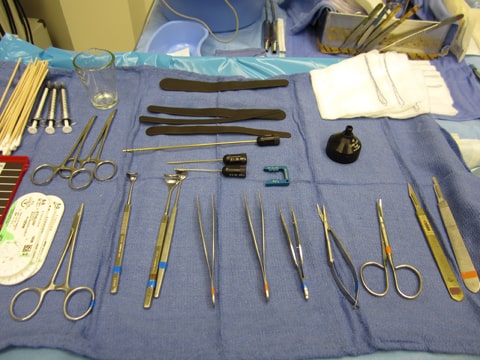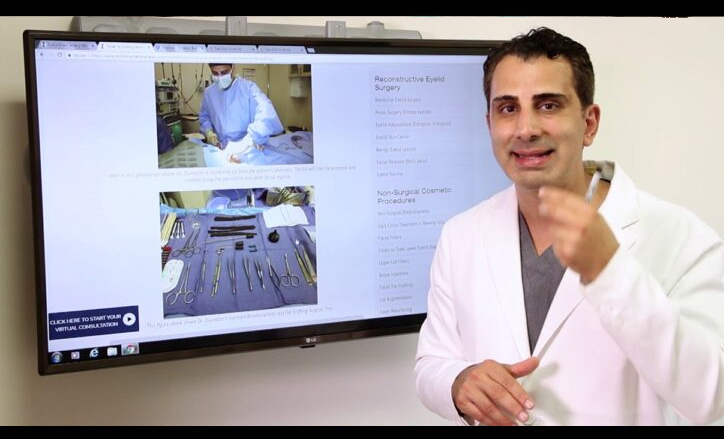Facial Fat Grafting
Add Volume Around the Eyes with Fat Grafting
Periorbital and facial fat grafting is the process of acquiring the patient’s own fat for facial volume augmentation.This is also referred to as complementary facial fat grafting. Certain areas of the face such as the temples, cheeks, the eyelid area, midface, and nasolabial folds can be augmented with fat. Dr. Zoumalan usually performs fat grafting in cases where there is significant volume loss. There is some variability with fat grafting as it settles down with time, so given this possibility, Dr. Zoumalan does discuss the possibility of requiring hyaluronic acid fillers several months after fat grafting to really achieve the desired outcome.
Dr. Zoumalan does not usually perform fat grafting for minor areas of volume loss though. For these cases, Dr. Zoumalan usually prefers a hyaluronic acid gel over fat grafting since hyaluronic acid fillers are predictable and reversible in cases of minor adjustments.
If Dr. Zoumalan determines that you will be a good candidate for fat grafting, it can often be combined with other cosmetic eyelid surgeries.
The process
The fat is usually harvested from the patient’s abdominal area (either near the umbilicus–belly button– or the side flanks). This is done in the safest manner using gentle suction techniques. Dr. Zoumalan carefully prepares the fat products with the assistance of his surgical team. The donor site heals well and may have some swelling which usually improves over the first week or two. The fat is then delicately injected at various areas of the face that require volume augmentation. Most common locations of injection include the temple areas, upper and lower eyelids, mid face or cheek bones, naso-labial folds (fold between the nose and lips), lips, and jaw line. It is extremely important for the surgeon to place the fat products in the exact planes below the skin in order to allow for the maximal result.
Fat grafting is often useful in cases where larger volume of fillers is needed and when the patient desires a long-lasting effect. Patients should expect swelling which usually improves over the course of 1-2 weeks. Bruising is minimized by Dr. Zoumalan’s injection techniques. The results are often seen many years out from the surgery.
Common treatment areas include:
- Nasolabial folds, found between the nose and the corner of the lips
- Eyelids, tear trough deformity, including the dark circles or “bags” under eyelids (Read more)
- Temples
- Midface area
- Cheek bones
- Lip augmentation



Preoperative diagnosis: Bilateral upper lid mild ptosis, upper and lower lid dermatochalasia (excess skin) and fat prolapse
Procedure performed: Bilateral upper lid ptosis repair, upper and lower lid blepharoplasty, periorbital and lower lid fat grafting.

Preoperative diagnosis: Bilateral upper brow ptosis, lower lid tear trough hollows and midface volume loss.
Procedure performed: Endoscopic brow lift, periorbital and midface fat grafting, lower lid chemical peel (TCA 30%).
Disclaimer:
*Individual results may vary
All before and after pictures displayed are real patients who have consented to having their pictures published on our site. Individual results will vary with each patient and Dr. Christopher Zoumalan does not guarantee any outcomes of procedures shown. All pictures are meant for reference and illustrative purposes only.
Patients that do not wish to undergo repeated office-based injections on a yearly or so basis or would rather have their own product injected may be great candidates for periorbital and facial fat grafting. However, I generally perform fat grafting in the operating room and many patients usually do not wish to undergo fat grafting unless they are also undergoing a cosmetic eyelid or facial plastic surgery at the same time.
Patients that would rather undergo filler injections in the office can do so but not with own fat. The office-based fillers I use include the family of hyaluronic acids, and the advantage is that these fillers are reversible, done in the comfort in the office, minimal bruising, and avoids the need for IV sedation
I also routinely perform periorbital and facial fat grafting at the same setting of a cosmetic eyelid surgery in patients that may require volume augmentation. In that way, both the fat grafting and the eyelid procedure can be performed at the same time while the patient receives sedation.
- Is the procedure painful and should I expect bruising?
- If I’m not happy with the results, is the procedure reversible?
- What are the risks associated with non-surgical cosmetic procedures?
- When can I resume my activities and what are general post care instructions for my non-surgical cosmetic procedures?



